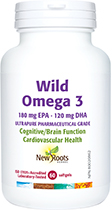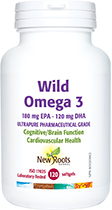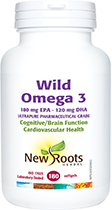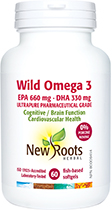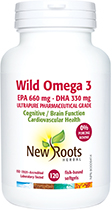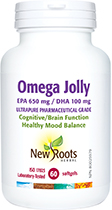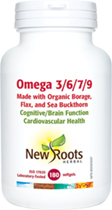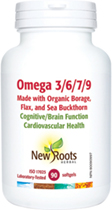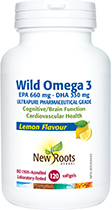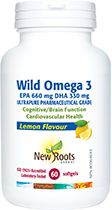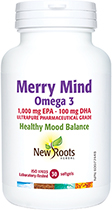Targeted Use of Fish Oil: A Review of the Evidence
Oily fish and fish oil are the richest sources of long-chain omega-3 fatty acids, eicosapentaenoic acid (EPA) and docosahexaenoic acid (DHA). DHA is an important structural component of the brain and nervous system, while EPA is a powerful anti-inflammatory and mood-regulating nutrient. Fish-oil products have become more sophisticated in recent years, with variations on EPA:DHA ratio, dosing, etc. Research suggests that different oils may have superior effects for specific therapeutic goals or conditions. How does one determine the best oil in a given scenario?
Cardiovascular
Omega-3s first rose to prominence for their cardioprotective effects. GISSI, the Italian study of patients surviving a heart attack, was the first important trial demonstrating the ability of fish oil to lower the risk of coronary (heart-related) death.[1] In this study, a dose of 1 g (1000 mg) combined EPA+DHA was given. This was among patients who were already receiving standard-of-care medications. Another study in Japan, JELIS, went on to show that at a higher dose, approximately 2 g (2000 mg) of combined EPA+DHA, supplementation with fish oil was also able to prevent nonfatal second coronary events.[2][3] At a dose of 2 g combined EPA+DHA, fish oil has also been shown to powerfully lower triglyceride, a component of a person’s cholesterol profile that is associated with adverse cardiovascular health.[4]
Inflammation
Many chronic health conditions are associated with abnormally high levels of inflammation. Some of these include arthritis, chronic pain, fibromyalgia, many skin conditions such as eczema and psoriasis, asthma, inflammatory bowel diseases such as ulcerative colitis, and Crohn’s disease. Indeed, it is thought that some of the process of plaque formation in the heart—atherosclerosis—is inflammatory in nature. It is also now thought that depression is partly inflammatory in nature. The list goes on…
Both DHA and EPA have anti-inflammatory effects, but EPA is superior in this regard. The enzymes cyclooxygenase (COX) and lipooxygenase (LOX) are responsible for metabolizing certain fatty acids to specific cytokines—signaling chemicals—in the body.[5] These enzymes convert the omega-6 fatty acid arachidonic acid (AA) into the proinflammatory cytokines prostaglandin E2 (PGE2) and leukotriene B4 (LTB4), thereby promoting further inflammation. Both DHA and EPA function as competitive inhibitors of these enzymes; this means that they can compete with arachidonic acid for “space” in these enzymes. The more EPA and DHA is taken up by the enzyme, the less arachidonic acid is taken up, and therefore the less proinflammatory cytokines are produced. In this way, both DHA and EPA are able to squelch inflammation.
In addition, DHA and EPA may both be metabolized into inflammation-resolving mediators called resolvins, protectins, and maresins.[6] However, EPA is also metabolized into anti-inflammatory species of eicosanoids,[6] and it seems to exert stronger effects on pathways like interferon signaling and genetic expression that result in anti-inflammatory effects.[7][8] Therefore, EPA is considered to be a stronger anti-inflammatory compared to DHA, and a dose of 2 g of EPA is used for treatment of inflammation.
Mood
With respect to impact on mood, the evidence on EPA has now developed to the point that there exist multiple systematic reviews and meta-analyses of fish oils for depression, as well as other mental health conditions such as ADHD.[9][10][11][12][13] The evidence clearly shows that EPA—not DHA—is the efficacious omega-3 when it comes to depression and ADHD. Sublette et al performed a meta-analysis of 15 trials including 916 participants.[10] Researchers concluded that “supplements with EPA ≥ 60% showed benefit on standardized mean depression scores [while] supplements with EPA < 60% were ineffective.”[10]
In a meta-analysis of ten trials involving 699 children with ADHD, researchers found that the proportion of EPA content in the fish oil was associated with its effectiveness for ADHD. Specifically, higher-EPA fish oil was “modestly effective”[13] compared to pharmaceutical treatments for ADHD. It was suggested that “it may be reasonable to use omega-3 fatty supplementation to augment traditional pharmacologic interventions or for families who decline other psychopharmacologic options.”[13]
EPA may exert anti-inflammatory effects in the brain and regulates cell-cell signaling as well as glucose metabolism in the brain.[14] Studies show that supplementation with EPA may be equivalent to selective serotonin reuptake inhibitors (SSRIs) for mild to moderate depression.[15] One study found that supplementation with 1000 mg of EPA was equally effective as 20 mg of fluoxetine (an SSRI) in treating major depression; however, the combination of EPA and fluoxetine was superior to either one alone.[15] Response rates after four weeks were approximately 50% for either fluoxetine or EPA, but increased to 80% when both were combined. A dose of 1 g of EPA is considered therapeutic for the treatment of mood disorders.
Pregnancy
Finally, pregnancy is an important area where supplementation with fish oil has been shown to have significant benefits. Docosahexaenoic acid (DHA) is well-known for its beneficial effects on neurodevelopment, where it is a major component of the phospholipid bilayer membrane of neurons. In the third trimester, there is a rapid increase in the proportion of omega-3 fatty acids in the fetal brain, retina, and liver.[16]
Studies suggest that fish oil supplementation during pregnancy improves measures of intelligence in children, including mental processing, hand-eye coordination, and problem solving.[17][18][19] Fish intake during pregnancy has been associated with higher verbal IQ, social behaviour, fine motor, communication, and social development scores.[20]
While the role of EPA is often overlooked in this setting, it is an important nutrient for ensuring the health of the mother, particularly in relation to mood.[10] EPA may also improve the impact of DHA, as it has also been shown to upregulate fatty acid transport proteins in the placenta, thereby increasing fetal transfer of DHA.[21] Given the evidence discussed above for mood, a 2:1 ratio of EPA:DHA is advocated for use in pregnancy.
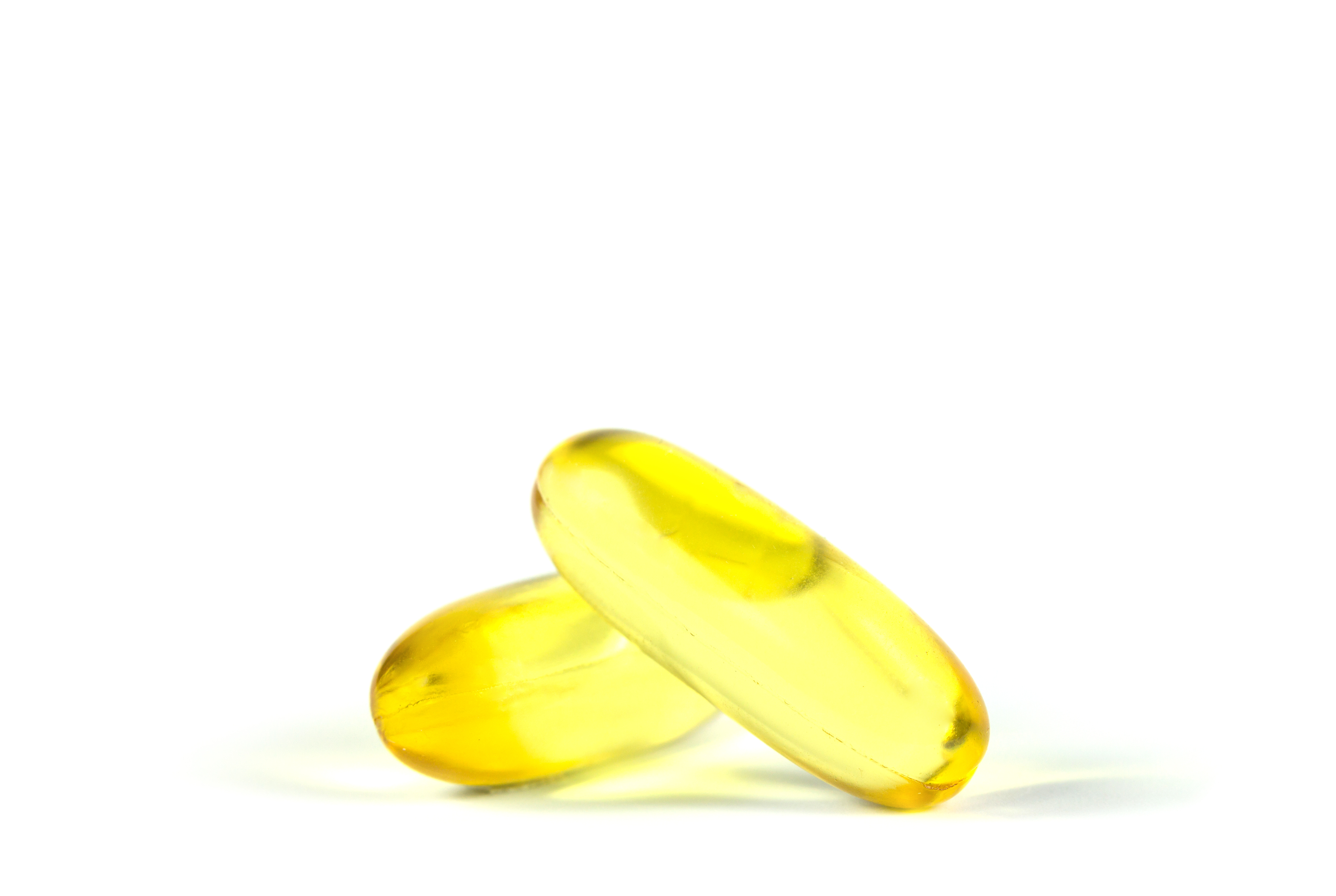 Finally, taking fish oil during pregnancy reduces the risk of allergic disease, including eczema, asthma, and allergy in the offspring.[22] Supplementation of between 2 and 4 g of combined EPA and DHA has been associated with an increase in the number of T-regulatory cells, that are involved in dampening an overactive immune response.[23] Supplementation with fish oil has been associated with a decrease in the incidence of food allergy and eczema, and a reduction in
Finally, taking fish oil during pregnancy reduces the risk of allergic disease, including eczema, asthma, and allergy in the offspring.[22] Supplementation of between 2 and 4 g of combined EPA and DHA has been associated with an increase in the number of T-regulatory cells, that are involved in dampening an overactive immune response.[23] Supplementation with fish oil has been associated with a decrease in the incidence of food allergy and eczema, and a reduction in
the risk of asthma at the age of 16.[24]
References
- No authors listed. “Dietary supplementation with n-3 polyunsaturated fatty acids and vitamin E after myocardial infarction: results of the GISSI-Prevenzione trial. Gruppo Italiano per lo Studio della Sopravvivenza nell'Infarto miocardico.” Lancet Vol. 354, No. 9177 (1999): 447–455.
- Mozaffarian, D. “JELIS, fish oil, and cardiac events.” Lancet Vol. 369, No. 9567 (2007): 1062–1063.
- Yokoyama, M., et al; Japan EPA lipid intervention study (JELIS) Investigators. “Effects of eicosapentaenoic acid on major coronary events in hypercholesterolaemic patients (JELIS): a randomised open-label, blinded endpoint analysis” Lancet Vol. 369, No. 9567 (2007): 1090–1098.
- Reis, C.E., et al. “Safety in the hypertriglyceridemia treatment with N-3 polyunsaturated fatty acids on glucose metabolism in subjects with type 2 diabetes mellitus.” Nutricion Hospitalaria Vol. 31, No. 2 (2014): 570–576.
- Ricciotti, E. and G.A. FitzGerald. “Prostaglandins and Inflammation.” Arteriosclerosis, thrombosis, and vascular biology Vol. 31, No. 5 (2011): 986–1000.
- Calder, P.C. “Omega-3 fatty acids and inflammatory processes: from molecules to man.” Biochemical Society Transactions Vol. 45, No. 5 (2017): 1105–1115. doi: 10.1042/BST20160474. [Epub 2017 Sep 12]
- Tsunoda, F., et al. “Effects of oral eicosapentaenoic acid versus docosahexaenoic acid on human peripheral blood mononuclear cell gene expression.” Atherosclerosis Vol. 241, No. 2 (2015): 400–408.
- Russell, F.D. and C.S. Bürgin-Maunder. “Distinguishing health benefits of eicosapentaenoic and docosahexaenoic acids.” Marine Drugs Vol. 10, No. 11 (2012): 2535–2559.
- Grosso, G., et al. “Role of omega-3 fatty acids in the treatment of depressive disorders: a comprehensive meta-analysis of randomized clinical trials.” PLoS One Vol. 9, No. 5 (2014): e96905. doi: 10.1371/journal.pone.0096905. [eCollection 2014]
- Sublette, M.E., et al. “Meta-analysis of the effects of eicosapentaenoic acid (EPA) in clinical trials in depression.“ Journal of Clinical Psychiatry Vol. 72, No. 12 (2011): 1577–1584.
- Sarris, J., Mischoulon, D., Schweitzer, I. “Omega-3 for bipolar disorder: meta-analyses of use in mania and bipolar depression.” Journal of Clinical Psychiatry Vol. 73, No. 1 (2012): 81–86.
- Martins, J.G. “EPA but not DHA appears to be responsible for the efficacy of omega-3 long chain polyunsaturated fatty acid supplementation in depression: evidence from a meta-analysis of randomized controlled trials.” Journal of the American College of Nutrition Vol. 28, No. 5 (2009): 525–542.
- Bloch, M.H. and A. Qawasmi. “Omega-3 fatty acid supplementation for the treatment of children with attention-deficit/hyperactivity disorder symptomatology: systematic review and meta-analysis.” Journal of the American Academy of Child and Adolescent Psychiatry Vol. 50, No. 10 (2011): 991–1000.
- Liperoti, R., et al. “Omega-3 polyunsaturated fatty acids and depression: a review of the evidence.” Current Pharmaceutical Design Vol. 15, No. 36 (2009): 4165–4172.
- Jazayeri, S., et al. “Comparison of therapeutic effects of omega-3 fatty acid eicosapentaenoic acid and fluoxetine, separately and in combination, in major in depressive disorder.” Australian and New Zealand Journal of Psychiatry Vol. 42, No. 3 (2008): 192–198.
- Simopoulos, A.P. “Summary of the NATO advanced research workshop on dietary omega 3 and omega 6 fatty acids: biological effects and nutritional essentiality.” Journal of Nutrition Vol. 119, No. 4 (1989): 521–528.
- Helland, I.B., et al. “Maternal supplementation with very-long-chain n-3 fatty acids during pregnancy and lactation augments children's IQ at 4 years of age.“ Pediatrics Vol. 111, No. 1 (2003): e39–e44.
- Judge, M.P., Harel, O., Lammi-Keefe, C.J. “Maternal consumption of a docosahexaenoic acid-containing functional food during pregnancy: benefit for infant performance on problem-solving but not on recognition memory tasks at age 9 mo.” American Journal of Clinical Nutrition Vol. 85, No. 6 (2007): 1572–1577.
- Dunstan, J.A., et al. “Cognitive assessment of children at age 2(1/2) years after maternal fish oil supplementation in pregnancy: a randomised controlled trial.” Archive of Diseases in Childhood: Fetal and Neonatal Edition Vol. 93, No. 1 (2008): F45–F50. [Epub 2006 Dec 21]
- Hibbeln, J.R., et al. “Maternal seafood consumption in pregnancy and neurodevelopmental outcomes in childhood (ALSPAC study): an observational cohort study.” Lancet Vol. 369, No. 9561 (2007): 578–585.
- Larqué, E., et al. “Placental transfer of fatty acids and fetal implications.” American Journal of Clinical Nutrition Vol. 94, No. 6 Suppl (2011): 1908S–1913S.
- Furuhjelm, C., et al. “Fish oil supplementation in pregnancy and lactation may decrease the risk of infant allergy.” Acta Paediatrica Vol. 98, No. 9 (2009): 1461–1467.
- Denburg, J.A., et al. “Fish oil supplementation in pregnancy modifies neonatal progenitors at birth in infants at risk of atopy.” Pediatric Research Vol. 57, No. 2 (2005): 276–281.
- Olsen, S.F., et al. “Fish oil intake compared with olive oil intake in late pregnancy and asthma in the offspring: 16 y of registry-based follow-up from a randomized controlled trial.” American Journal of Clinical Nutrition Vol. 88, No. 1 (2008): 167–175.
 Philip Rouchotas, MSc, ND
Philip Rouchotas, MSc, ND
Well-known in the community as a naturopathic doctor, associate professor,
and editor-in-chief of Integrated Healthcare Practitioners.
 Heidi Fritz, MA, ND
Heidi Fritz, MA, ND
A practicing naturopathic doctor since 2007, her areas of focus include
women's health, children's health, chronic pain, and more.

 Stores
Stores
